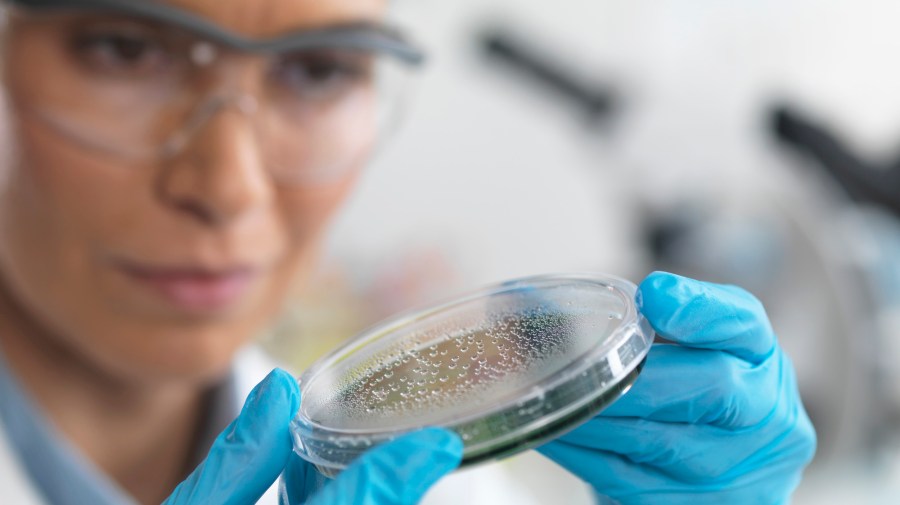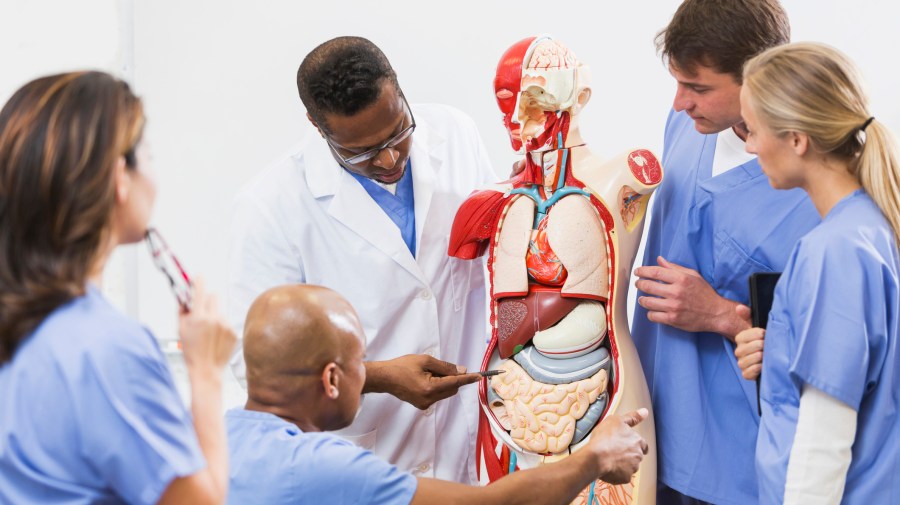What Are Some Examples of Saprophytic Bacteria?

Imagine a world where leaves fall from the trees every season but then never disappear. We would soon be up to our eyeballs in dead leaves. Fortunately, organisms known as saprotrophs serve as a critical part of the life cycle by feeding on dead organic matter, which ultimately returns all its components back to the environment and the food chain when plants consume the nutrients from the soil, and animals consume the plants.
Derived from the Greek words sapros (rotten or putrid) and trophe (nourishment), saprotrophs are critical to decomposition and consist of bacteria — known as both saprotrophic bacteria and saprophytic bacteria — fungi and water molds. Let’s take a look at some key information about saprophytic bacteria and what they do.
What Are Bacteria?
Consisting exclusively of single-cell organisms, bacteria are the most prolific life-form on the planet and exist in almost every environment, including inside the bodies of other living organisms. As important decomposers, saprophytic bacteria feed at a microscopic level using absorptive nutrition, a process that breaks down cells using enzymes. The bacteria then absorb the resulting nutrients.

Classified as a prokaryote — organisms without a nucleus, internal membranes and specific organelles — bacteria can feed on almost any organic compound to survive. That may sound invasive and lethal, but most bacteria are actually helpful and not harmful to humans.
Some Benefits of Saprophytic Bacteria
As a primary organism needed for decomposition, saprophytic bacteria have the obvious benefit of returning nutrients like iron, phosphorus and calcium to the Earth, where plants absorb them to produce life-sustaining hydrogen, nitrogen, carbon and other vitamins and minerals. Many beneficial types of bacteria live inside the human body to help keep humans healthy. Hundreds of organisms work to break down the nonliving organisms humans eat. Without them, food would never digest properly, and harmful bacteria would quickly multiply.

Plants contain cellulose, a component that humans can’t actually digest. The bacteria Spirochaeta cytophaga uses absorptive nutrition to break down the cellulose, unlocking the power of plant nutrition for humans. Another example, Lactobacillus, breaks down milk to make yogurt, while other types of bacteria break it down to make all the different types of cheeses.
Both aerobic bacteria and anaerobic bacteria are critical components in breaking down toxins in sewage, which is critical for the ongoing safety of our environment. Additionally, the methane gas produced during the process is sometimes used as a cheap biogas in place of fuel. The biofuel ethanol also comes from a process developed by biotechnology experts that uses anaerobic bacteria to break down cane sugar and corn.
The Main Danger Associated with Certain Saprophytic Bacteria
Despite the extensive list of benefits humans derive from many types of saprophytic bacteria, some types are responsible for causing different types of food poisoning. Escherichia coli — perhaps better known by its shorter E. coli nickname — is one example of a potentially dangerous saprophytic bacteria that is capable of causing a food-borne illness.






